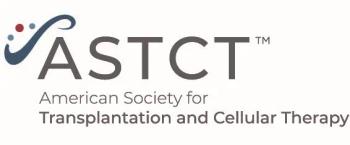
Oncology NEWS International
- Oncology NEWS International Vol 9 No 6
- Volume 9
- Issue 6
Mylotarg Is Approved for Older AML Patients in First Relapse
ASCO-Mylotarg (gemtuzumab ozogamicin) has received FDA approval for treatment of CD33-positive acute myelogenous leukemia (AML) in patients age 60 and older in first relapse who are poor candidates for cytotoxic therapy. The agent, manufactured by Wyeth-Ayerst, was approved as an orphan drug.
ASCO-Mylotarg (gemtuzumab ozogamicin) has received FDA approval for treatment of CD33-positive acute myelogenous leukemia (AML) in patients age 60 and older in first relapse who are poor candidates for cytotoxic therapy. The agent, manufactured by Wyeth-Ayerst, was approved as an orphan drug.
Eric Sievers, MD, of the Fred Hutch-inson Cancer Research Center, presented results at the 36th annual meeting of the American Society of Clinical Oncology (New Orleans) showing that the agent is safe and effective in these older patients.
“Mylotarg is a new option for many adult patients with recurrent AML,” Dr. Sievers said in an interview. “Patients older than 60 achieved remission at a rate comparable to that of younger patients.”
Mylotarg is the first of a new class of anticancer agents known as antibody-targeted chemotherapy. It consists of a humanized monoclonal antibody that targets the CD33 antigen found on the surface of most AML cells. This engineered antibody is linked to calicheamicin, a highly potent antitumor antibiotic.
Dr. Sievers reported updated results from three open-label phase II mul-ticenter clinical trials involving 142 patients with CD33-positive AML in first relapse. Mylotarg produced remission in 30% of patients. Remission was defined as no more than 5% blasts in the marrow, recovery to greater than 1,500/mL neutrophils, and red blood cell and platelet transfusion independence prior to any postremission therapy.
Twenty-one of 62 patients under age 60 achieved remission (34%), as did 21 of 80 patients 60 years and older (26%). There were no clinically significant differences in side effects between the age groups.
Although most patients exhibited grade 3-4 neutropenia (97%) and thrombocytopenia (99%), only 4% had grade 3-4 mucositis and 28% grade 3-4 infections. There also was a low incidence of severe nausea and vomiting (11%) and no drug-related cardiotoxicity, cerebellar toxicity, renal failure, or alopecia.
“We did see a group of patients that experienced bilirubin elevations,” Dr. Sievers told ONI. “Generally, these elevations were transient and reversible, but one patient experienced clinically significant veno-occlusive disease. This risk of hepatic damage might be increased in patients who have a history of hematopoietic stem cell transplant.”
Outpatient Administration
Mylotarg is administered as two IV infusions 14 days apart. Many patients received the drug on an outpatient basis. “Patients can typically be discharged from the outpatient clinic after their infusion. In most cases, they are able to eat, and feel reasonably well,” Dr. Sievers said.
The median duration of hospitalization was 24 days, but 16% of the patients were hospitalized for no more than a week. “Patients do become neutropenic and may require platelet transfusions,” he said. “The rate of sepsis is about 15% or 16%, which is typically less than might be seen with standard chemotherapy regimens.”
Dr. Sievers said that Mylotarg “will play a role in older patients who have had previous therapy, don’t want to go through it again, and want to stay out of the hospital. Some older patients treated with Mylotarg, after losing remission, have gone through two or three cycles of additional therapy.”
While Mylotarg does not produce “explicit cures,” he said, “it gives the possibility of turning AML into a more chronic disease.” For younger patients who are candidates for transplant, he said that use of Mylotarg gets patients into a second remission and thus to transplant “much more easily and with less toxicity.”
Articles in this issue
over 25 years ago
Genentech Issues Warning on Herceptinover 25 years ago
How Physicians Can Effect Changes in Health Care Policyover 25 years ago
Four From Congress Receive Tsongas Awardover 25 years ago
NCI Targets Cancer Disparities With Community-Based Programsover 25 years ago
Mapping Predicts Nodal Status in Colorectal Cancer Patientsover 25 years ago
SSO President Tells Members: ‘Remember Your Core Values’over 25 years ago
HHS Grants $794 Million in Ryan White Funds to Improve HIV Servicesover 25 years ago
Rapid Dose Titration With Controlled-Release Oxycodoneover 25 years ago
Standard-Dose Chemo May Have Long-Term Cognitive EffectsNewsletter
Stay up to date on recent advances in the multidisciplinary approach to cancer.


















































































